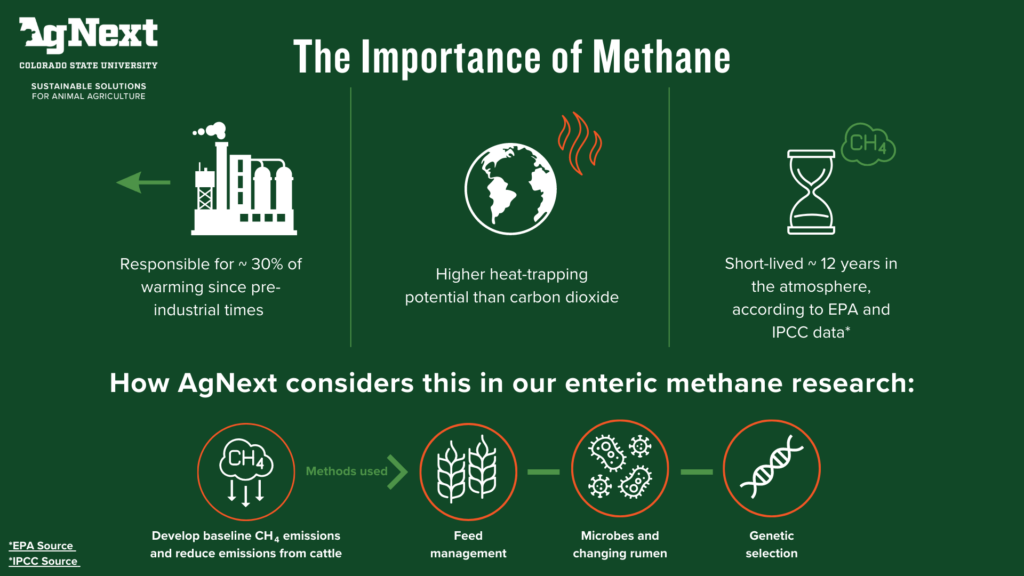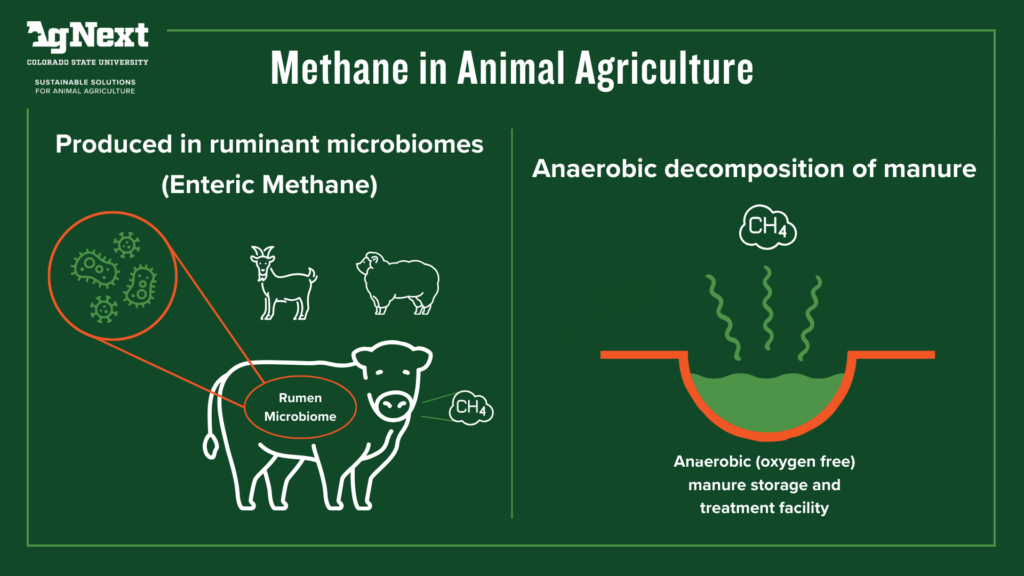Methane
Methane is an important greenhouse gas to consider when thinking about sustainability and climate change. In order to slow warming, methane emissions need to be reduced across various sectors including agriculture. At AgNext, we are utilizing our state-of-the-art facility and expert team to find ways to reduce methane in animal agriculture.
What is Methane?
Methane is a potent greenhouse gas because it has a high heat-trapping potential which traps heat in the atmosphere. In animal agriculture, methane is produced in two ways. First, methane is produced in the gut microbiome of ruminant animals such as cattle, sheep, and goats (also called enteric methane). Enteric methane is essentially unused energy from an animal’s body, which is left over after eating. One way to reduce enteric methane emissions from ruminant animals is to feed more carbohydrates, such as grain, so that the animal uses more of the energy from food, and there is less energy left over to be converted to methane. Another way methane is produced in animal agriculture is through anaerobic decomposition of manure. The methane produced is managed and made into other forms of energy at anaerobic methane treatment facilities. Interested in learning more about methane? Read our methane blog.
Methane Graphics






